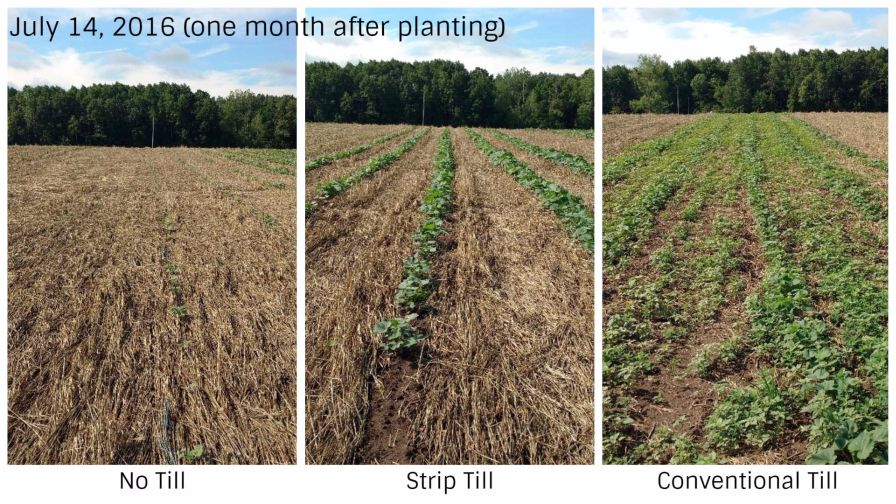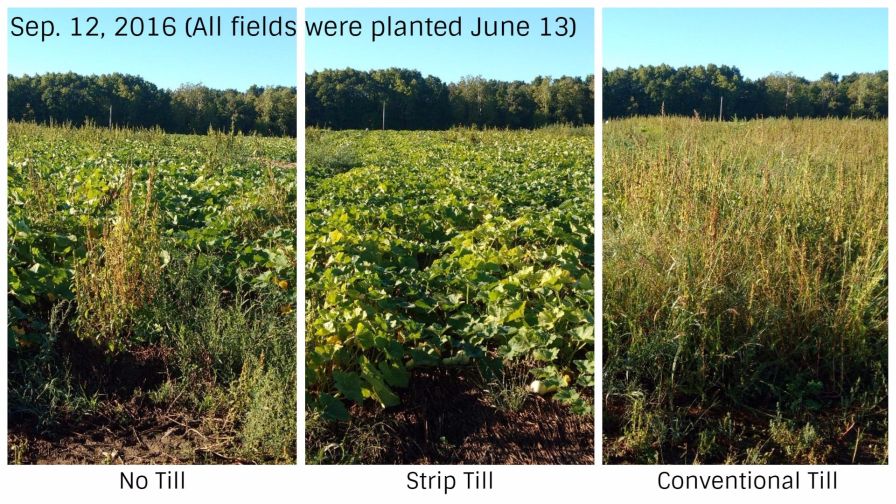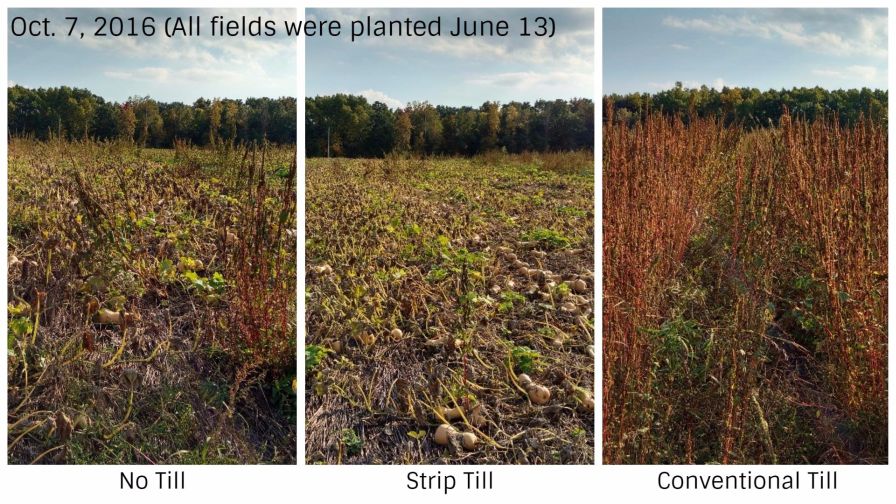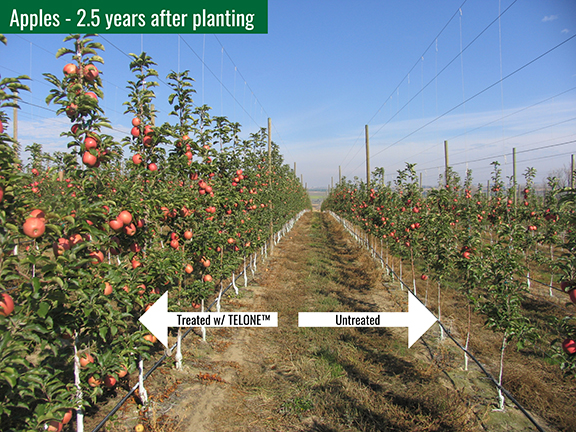Considering Cover Crops? Find Out Which Method Works Best
In 2014, I met a vegetable grower interested in expanding dryland squash production while reducing his use of plastic mulch. His hope was to plant a cover crop and modify tillage to manage weeds and soil moisture, all-the-while maintaining yields.
So in 2015 and 2016, we ran a two-year project investigating the moisture retention capacity and nutrient management of a fall-planted rye mulch. We tested how butternut squash grew under no-till, strip-till, plasticulture, and bareground production methods.
In 2018, we hope to trial a system like this for cole crops.
Incorporating cover crops has a learning curve. Hopefully, both organic and conventional growers can learn something from our work.
What We Learned from Planting

One advantage of running the project over two years is that you can see the results of mistakes and intentional methods. In 2015, we used about half the rye seed we intended to — 70 pounds per acre (lb/ac). In 2016, we used our target amount of 120 lb/ac.
In the first year, the rye decomposed more quickly, allowing weed germination and moisture loss. In 2016, the rye remained thick and matted through October. Rye biomass and bacterial activity can tie-up nitrogen, so we supplemented with at-plant fertilizer in the rows.
During planting, rye residue interfered with planting in all plots. In addition, the harder soil in no-till treatments resulted in a shallower seed depth, and more plant skips in the row. As a result, fewer plants germinated in no-till and bareground plots with heavy residue, and yield appeared to be suppressed.
Here’s a tip you may want to use: Plan to roll your rye and plant your crop perpendicular to the direction of drill seeded rye rows, or perpendicular to the previous years cash crop rows if the rye was broadcast seeded overtop. Try to plant “with the grain” of the rolled rye.
Which is Most Effective for Weed Suppression?

As you can see in the September 12 photos, there’s a marked difference in the how each method suppresses weeds. For this study, we chose to use a pre-emergent herbicide program, with no post-emergent follow-up.
I mentioned before that the harder soil of the no-till field resulted in fewer germinated plants and shallower seed depths. The seeds also took 7 to 10 days longer to germinate in both years, which became a significant factor in combating weed competition. This was especially apparent in 2016, when a complex of pigweed, nightshade, lamsbquarters, and volunteer potatoes came through the rye four weeks after our pre-emergent herbicide program.
Squash plants swamped weeds with their vines in strip-till plots, but the no-till squash faced greater weed competition before they could vine, and weeds were able to stay above the squash canopy.
So how do the three methods work for weed control? The story is in these photos: excellent weed control in strip-till plots; moderate control in no-till plots; and moderate-to-low weed control in bare-ground plots. Our worst weed pressure was in a bare-ground plot that we chisel plowed and tilled about a dozen times to incorporate the mature rye, which germinated lots of weed seeds.
The Impact on Yield

I found that yield was more sensitive to tillage than fertility in this trial.
In the strip till fields, there were fewer fruits per plant than in the other fields, although that was made up by having more plants per acres overall. The tons per acre were markedly higher: strip-till fields had 12.51 tons per acre, while bare ground and no-till had 9.7 tons and 8.72 tons per acre.
Fertigated plasticulture squash in an adjacent field in 2016 yielded 11.19 tons per acre, but these plots were not replicated and not analyzed in the 2016 study.
But there was a more significant interaction between fertility and tillage treatments on fruit weights.
We tested low rate controlled release fertilizer (CRF), high rate CRF, and grower standard fertilizer (GSF). Low rate CRF treatments within strip-till plots had significantly lower fruit weights than in other tillage plots (as determined by a specific contrast). This may suggest that the level of nitrogen (or other nutrient) became limiting in this tillage treatment as yield increased. However, this effect was not observed on overall tonnage.
See the Full Study Online
You can read the full report for free on the Midwest Vegetable Variety Trials Report website.










